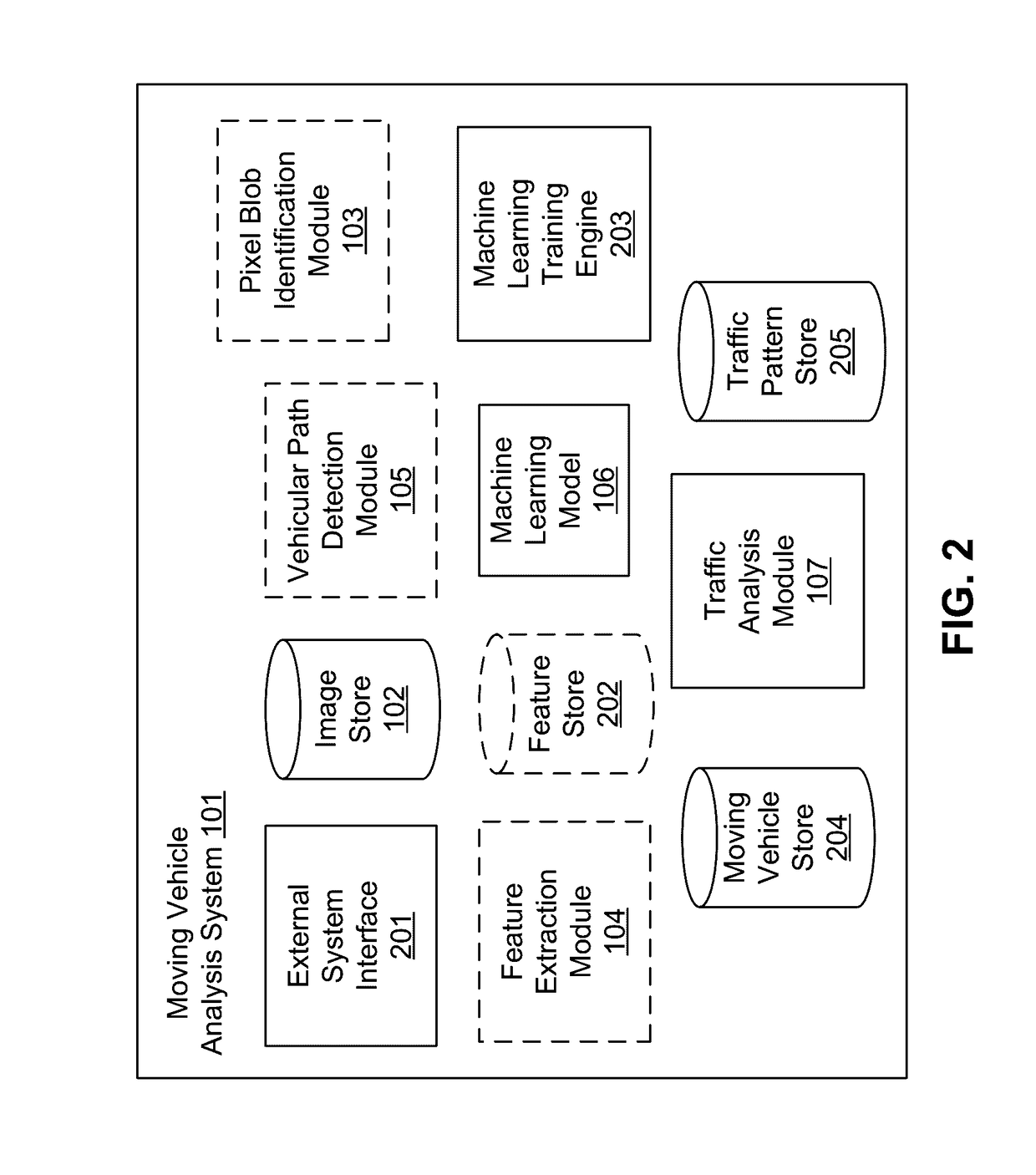Moving vehicle detection and analysis using low resolution remote sensing imagery
a remote sensing and vehicle detection technology, applied in image analysis, image enhancement, instruments, etc., can solve the problems of large satellite resources, high cost, and inability to obtain high-resolution aerial images, and achieve high spatial resolution images. , the effect of high spatial resolution
- Summary
- Abstract
- Description
- Claims
- Application Information
AI Technical Summary
Benefits of technology
Problems solved by technology
Method used
Image
Examples
example training
Sets For The Machine Learning Model
[0071]FIG. 5 illustrates example training sets 500 and 510 for the machine learning model 106 in the moving vehicle analysis system 101. Each training set includes the training images 401 and training labels 402 illustrated and described in FIG. 4. The positive training set 500 shown in FIG. 5 contains features 410 that have been determined to have the presence of moving vehicles. The positive training set 500 is a combined image from images taken at distinct times. The positive training set 500 includes two labeled pixel blobs 501 and 502. In one example, pixel blob 501 corresponds to the green spectral band and pixel blob 502 corresponds to the red spectral band. The positive training set 500 further includes a moving vehicle training label 503 used by the machine learning model training engine 203 to train the machine learning model 106 that the two pixel blobs 501 and 502 correspond to a moving vehicle. The positive training set 500 further inc...
example process
[0075]FIG. 6 illustrates an example process for the moving vehicle analysis system 101. In some embodiments, the process may have different and / or additional steps than those described in conjunction with FIG. 6. For example, optional steps are shown using dashed lines in FIG. 6. Steps of the process may be performed in different orders than the order described in conjunction with FIG. 6. Some steps may be executed in parallel. Alternatively, some of the steps may be executed in parallel and some steps executed sequentially. Alternatively, some steps may execute in a pipelined fashion such that execution of a step is started before the execution of a previous step.
[0076]The moving vehicle analysis system 101 receives 600 images of a geographical area taken at distinct times from an aerial imaging device 110 and stores the images in an image store 102 as illustrated and described above in detail with reference to FIG. 2. An example image of a geographical area received from an aerial...
example application
of the Process
[0080]FIG. 7 illustrates an example application of the process illustrated and described above in detail with reference to FIG. 6 for the moving vehicle analysis system 101 for processing low resolution aerial imagery. The process may involve images 701, an optional pixel blob identification module 103, an image store 102, a vehicular path detection module 105, a feature vector 410, a machine learning model 106, a moving vehicle store 204, a traffic analysis module 107, a traffic database 109 and a traffic pattern store 205. Optional elements are shown using dashed lines in FIG. 7. The moving vehicle analysis system 101 receives images 701 of a geographical area via an external system interface 201, each image 701 captured at a distinct time. The images 701 may correspond to one or more spectral bands. The received images 701 shown in FIG. 7 are stored in the image store 102, as described above in detail with reference to FIG. 2.
[0081]In one embodiment, the pixel blob ...
PUM
 Login to View More
Login to View More Abstract
Description
Claims
Application Information
 Login to View More
Login to View More - R&D
- Intellectual Property
- Life Sciences
- Materials
- Tech Scout
- Unparalleled Data Quality
- Higher Quality Content
- 60% Fewer Hallucinations
Browse by: Latest US Patents, China's latest patents, Technical Efficacy Thesaurus, Application Domain, Technology Topic, Popular Technical Reports.
© 2025 PatSnap. All rights reserved.Legal|Privacy policy|Modern Slavery Act Transparency Statement|Sitemap|About US| Contact US: help@patsnap.com



